
Brian Slattery Photo
On the canal trail by the William "King" Lanson statue.
The history of New Haven entrepreneurship past and present. The fortunes of a neighborhood rising and falling, and rising again. The legacies of environmental depredation, and the work to create healthier, more sustainable places.
All these themes were touched upon in the latest walk from the New Haven Bioregional Group, in which Aaron Goode of Friends of the Farmington Canal Greenway led a group of about 30 walkers through the New Haven section of the urban trail that today connects almost seamlessly to Northampton, Mass.
The Farmington Canal trail walk was one of 15 walks in the state — and one of about 500 walks nationwide — conducted on Saturday to commemorate the birthday of writer and urban activist Jane Jacobs. Locally, Jane’s Walks were coordinated by Preservation Connecticut, represented on the walk by Executive Director Jane Montanaro.
The walk included a brief overview of what Goode called the “culmination of 200 years of transportation history,” as he told the story of the canal’s transformation from waterway to railway to trail.

Courtesy Aaron Goode
The Farmington Canal passing by Sleeping Giant in Hamden.
The canal was built from 1822 to 1828 amid a “canal-building frenzy,” said Goode, in the wake of the Erie Canal’s opening and success in 1820. New Haven elites like James Hillhouse saw a northward canal as a path to further prosperity and enlisted the Erie Canal’s chief engineer, Benjamin Wright — the “Elon Musk of his day,” Goode said — to survey the canal’s path. The canal was built largely by Irish workers, part of the first, pre-Great Famine migration of Irish to the U.S., who used hand tools and made about 40 cents a day.
Visions of ongoing success proved shortsighted. By the 1840s the canal was insolvent, “poor management, sabotage,” and “technological progress,” Goode said, in the form of the railroad. Tracks were laid next to the canal on its towpath. The railroad itself had a century-long run, until it was rendered obsolete by highway shipping.
A few decades of neglect followed, and in the 1980s, the rail company that owned the canal was ready to sell off the land. The “rails to trails movement was just getting going,” Goode said, and “some very forward-thinking people” saw the Farmington Canal as a perfect candidate, especially in tandem with the then-nascent larger trail project linking New Haven to Northampton, Mass.

Courtesy Aaron Goode
The canal trail before and after restoration.
The construction of the New Haven-Northampton trail is a multiple-decade, two-state effort involving several nonprofits and many municipalities. Around New Haven, efforts began in earnest in 1987 with the creation of the Farmington Canal Rail-to-Trail Association, which opened the first six miles of trail in Hamden and Cheshire in 1996.
For years, New Haven was “the weakest link” locally, Goode said. The city initially wanted to develop the land. Yale worried about safety. But in the mid-2000s the trail opened from the border of Hamden to Temple Street. The Friends of the Farmington Canal Greenway formed in 2012 to complete the trail’s final section, connecting to Long Wharf. After a “seemingly endless and excruciating series of delays,” Goode said, work began in 2021 and is expected to be complete this year. Soon it will connect to the East Coast Greenway, and could in time become part of a network of local and regional trails through New Haven and beyond.
The Friends of the Farmington Canal organizes clean-ups and other stewardship activities, as well as walking and bike tours. Most of all, however, they “work with neighborhood groups in communities alongside the trail to make sure this tremendous recreational and economic asset offers a safe and pleasant user experience for everyone,” Goode said. In this they were being mindful of Jane Jacobs, who knew that any project in a city “requires community partnership, community consultation,” Goode said. “You can’t just build something through a neighborhood and expect positive feedback and results” without community support.
Goode reported that the Farmington Canal Trail has seen serious use; infrared scanners on the trail show tens of thousands of walkers, runners, bikers, and scooters making almost 200,000 trips per year, for recreation and for commuting. The ultimate goal of these efforts is to turn the Farmington Canal trail into a place that offers a lot of culture as well, like the High Line in New York City, so that it’s “not just a place for recreation, but a place to see public art,” and a place that locals and visitors can “use and love.”
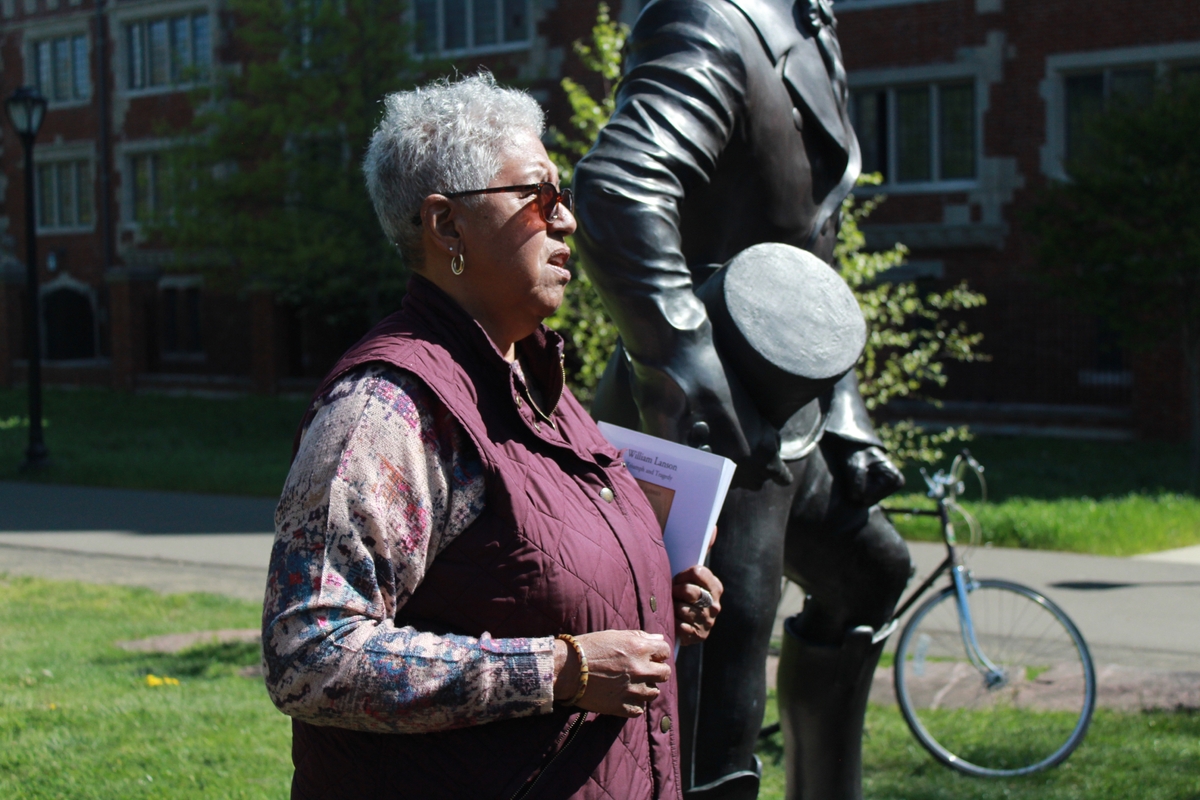
Brian Slattery Photo
Roslyn Hamilton.
Among the public art pieces already installed on the trail is a statue commemorating 19th-century Black entrepreneur and civic leader William “King” Lanson, sculpted by Dana King and installed on the trail in 2020. Roslyn Hamilton of the Amistad Committee, which spearheaded the statue’s installation, was on hand to give an overview of Lanson’s life (read previous articles on Lanson here and here for more detail), from his arrival in New Haven penniless and likely recently self-emancipated from slavery, to his business successes first as a cab service, then hotelier, then landowner and engineer, to his role as a leader in New Haven’s Black community, employing other Black people while also running an integrated hotel, helping found Dixwell Congregational Church, and serving as one of New Haven’s Black governors for his community.
Hamilton swiftly outlined the arc of his life, how New Haven’s White establishment turned against him for “getting too big and powerful.” His integrated hotel — “they used that against him,” claiming that “the hotel was a brothel.” Though he was married and had children, “they kept arresting him” and “worked on him,” eventually exhausting his wealth; he died a pauper in prison in 1851.
The Amistad Committee has published a biography, William Lanson: Triumph and Tragedy, by Katherine J. Harris, that stands as perhaps the most complete work on his life, but Hamilton also emphasized how little we know about Lanson considering his prominence. We know very little about his life before he arrived in New Haven; no portraits or drawings were made of him, so we don’t even know what he truly looked like.
“Black people have to piece their history together,” Hamilton said.
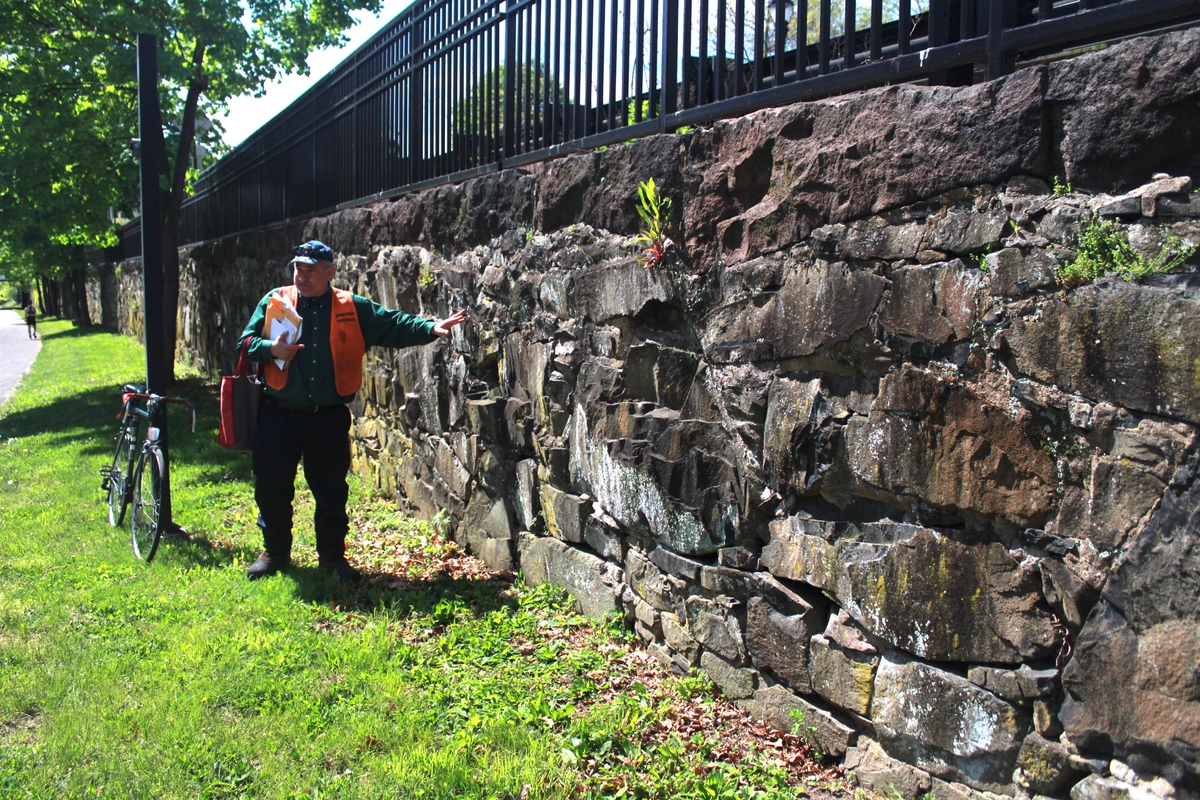
Starting the walk south along the trail, which followed the old canal route, Goode pointed out the wall made by workers in the 1820s, as well as two bas-reliefs on the entrances to Yale’s relatively recently constructed residential colleges, Benjamin Franklin and Pauli Murray, located close to the canal. The reliefs pay homage to the canal site as a waterway and as a railroad.
“History is everywhere in New Haven,” Goode said. “Sometimes literally beneath our feet, sometimes in front of our faces, sometimes way up in the sky and we have to crane our necks to see it.”
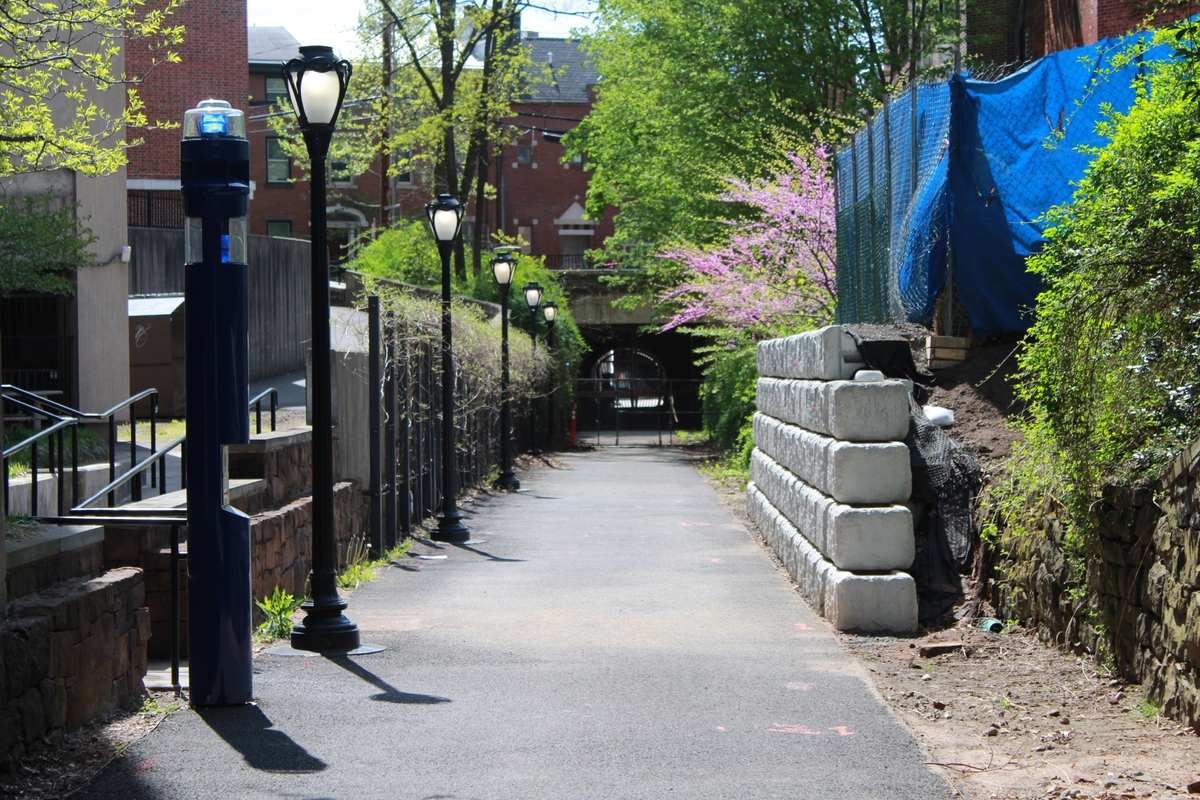
The trail continued just a little farther south to Temple Street, where it ended at a closed gate, waiting to be reopened.
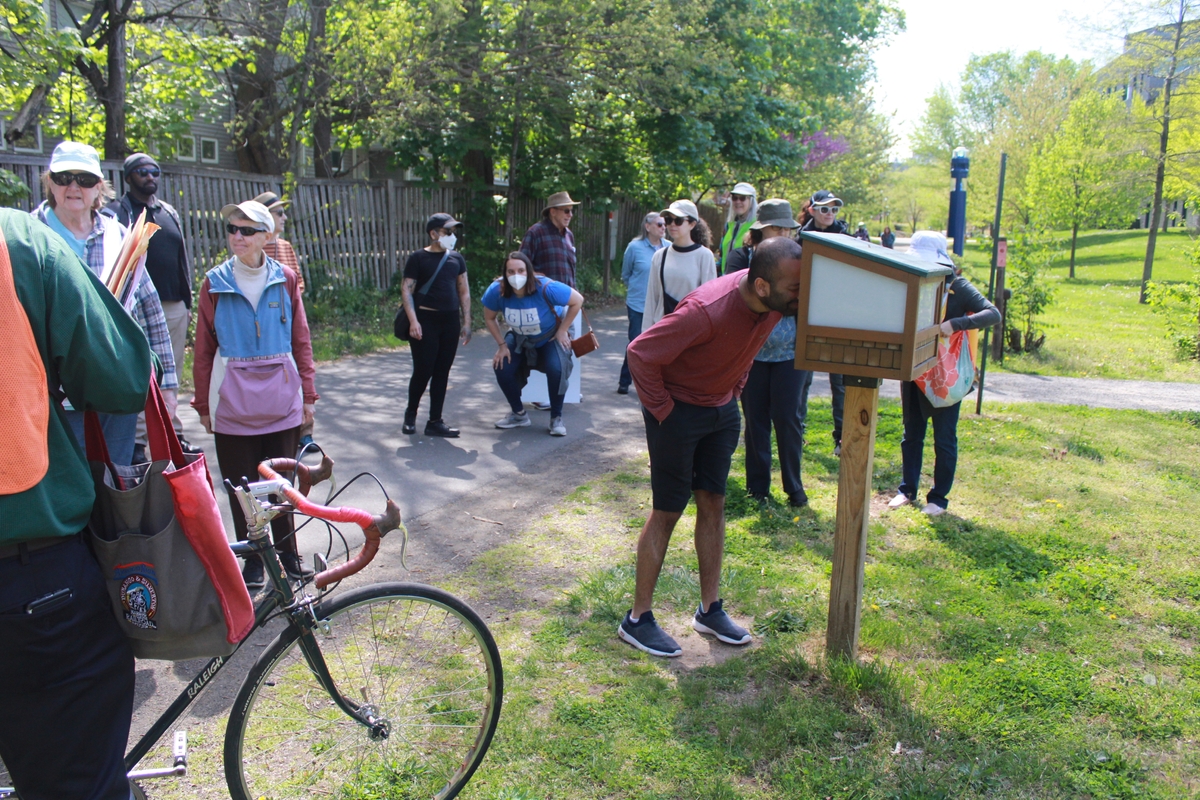
Heading north again, at Scantlebury Park, Goode pointed out the first of a series of diorama boxes installed along the trail. They depicted scenes from the canal’s history, but they were part of a puzzle created by Escape New Haven; one of its games sends players out into the city to collect clues and solve a crime.
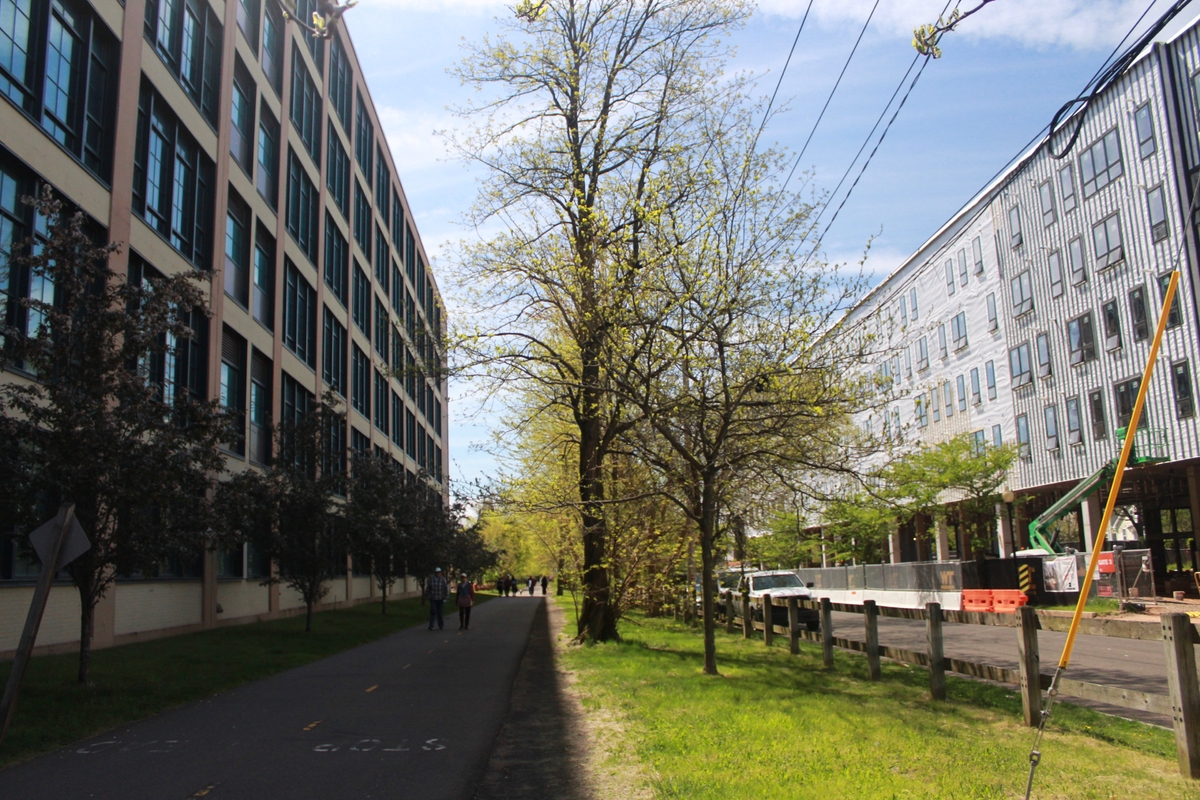
Continuing north, the trail headed through the former Winchester arms factory complex. Goode noted that the factory was made a historic district in 1984, “when the gun factory was actually still operating, which it did until 2006.” At about 250 acres, it’s now New Haven’s largest historic district.
Goode relayed how a century ago, Winchester was New Haven’s single largest employer, with 20,000 employees; overall, about a quarter of New Haven’s residents worked there, on three shifts that went around the clock. Those jobs, in turn, supported businesses up and down Dixwell and Winchester avenues, including a string of jazz clubs. “That all disappeared in the deindustrialization of the 1980s and 1990s,” Goode said.
Today Yale and Yale New Haven Hospital together are the city’s largest employers, and they lease space in some of the former Winchester complex, now Science Park. New Haven’s largest taxpayer, meanwhile, is the real estate company Winstanley Enterprises, “that specializes in offices and laboratory space for the ‘meds and eds’ sectors,” Goode said. Winstanley owns some of the Science Park buildings. In some ways, “New Haven has gone from a Winchester to a Winstanley economy.”
Pointing to the residential apartments being constructed all around the intersection of Munson and Canal, Goode noted that one development advertises the building’s proximity to the Farmington Canal trail as an amenity for its residents. “It’s what I call trail-oriented development and we love to see that,” Goode said. “It’s proof of concept that building trails and investing in placemaking is good business, doing well by doing good.”
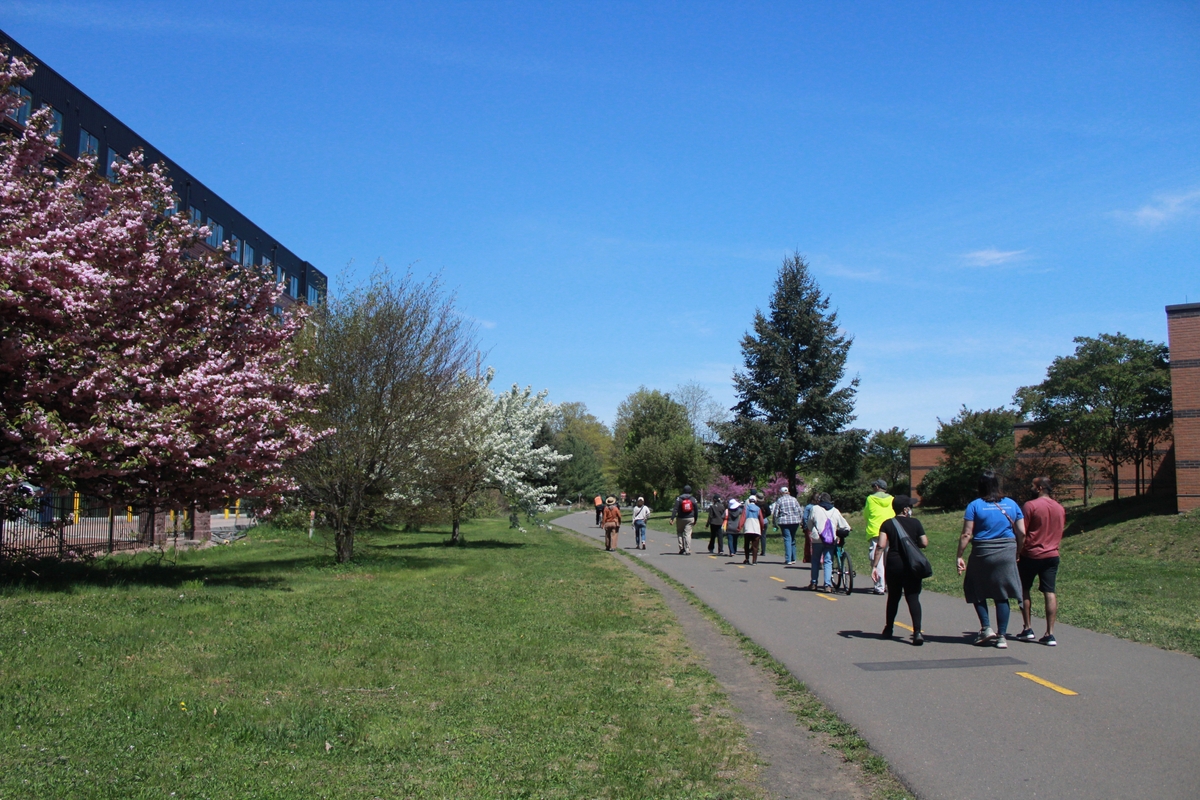
Continuing north, the ground passed behind the site at 71 Shelton Ave. where, in 1961, as Goode described it, “the US Atomic Energy Commission issued a secret nuclear energy license to a company that was located here called the United Nuclear Corporation,” part of the Olin Corporation, which also owned Winchester. Reactors for nuclear submarines were manufactured there until 1976, “when they realized it probably wasn’t the greatest idea to be handling radioactive materials in the middle of a densely populated urban neighborhood.”
“It was really only after the Cold War ended that we found out about all of this because it was a top-secret program.” The cleanup took about five years and cost $14 million. (Read more about the history of that site here.)
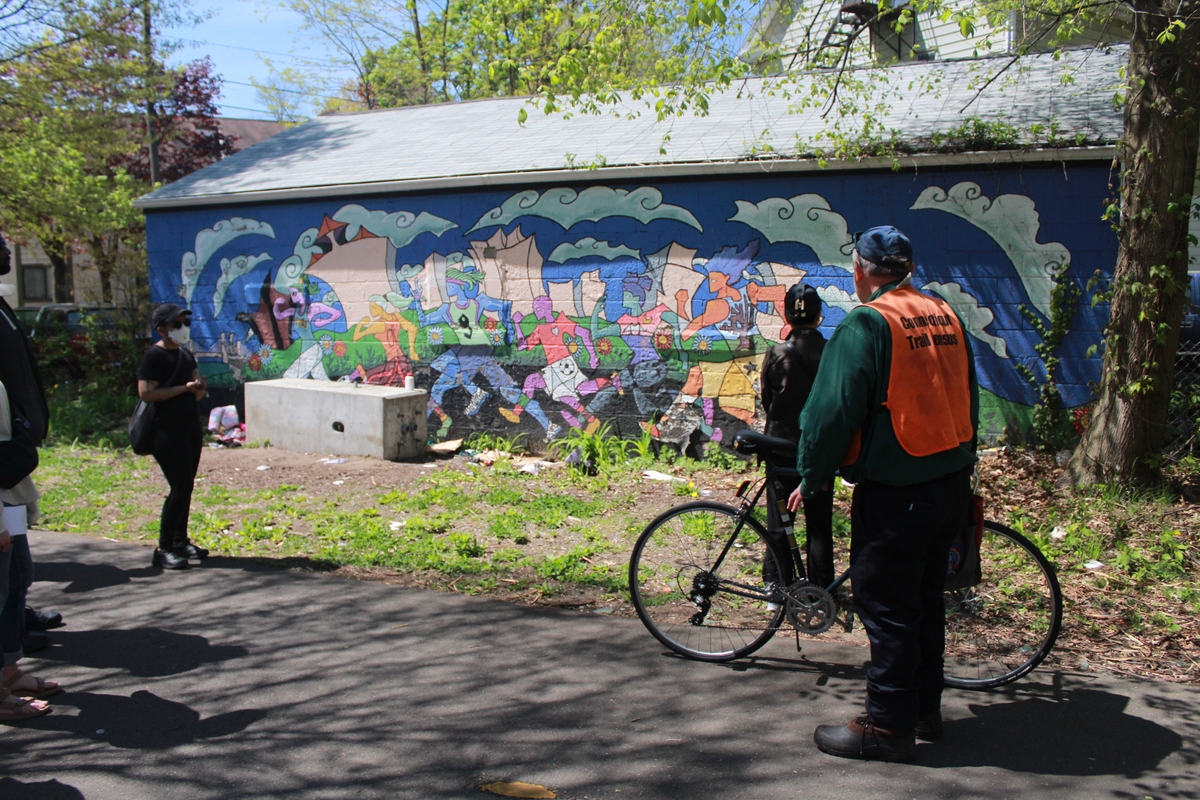
Now in Newhallville, the tour stopped by a mural installed by artist Kwadwo Adae in 2016, one of several along the canal trail, which would hopefully by joined by even more in the future.

The tour ended with a visit to the intersection of Shelton Avenue and Hazel Street, where Doreen Abubakar, the “visionary” working to “revitalize this whole area around the canal,” Goode said, awaited. On Saturday mornings, a stand is set up giving away free pancakes, as it has since 2016. Newhallville Bike Box, which opened in March, operates out of a shipping container next to the trail, fixing vehicles for trail and neighborhood riders alike. The entire area, once called the Mudhole, has been turned into Newhallville Park, with support from Gather New Haven and the Greater New Haven Green Fund. “I believe it is partnerships that sustain things,” Abubakar said.
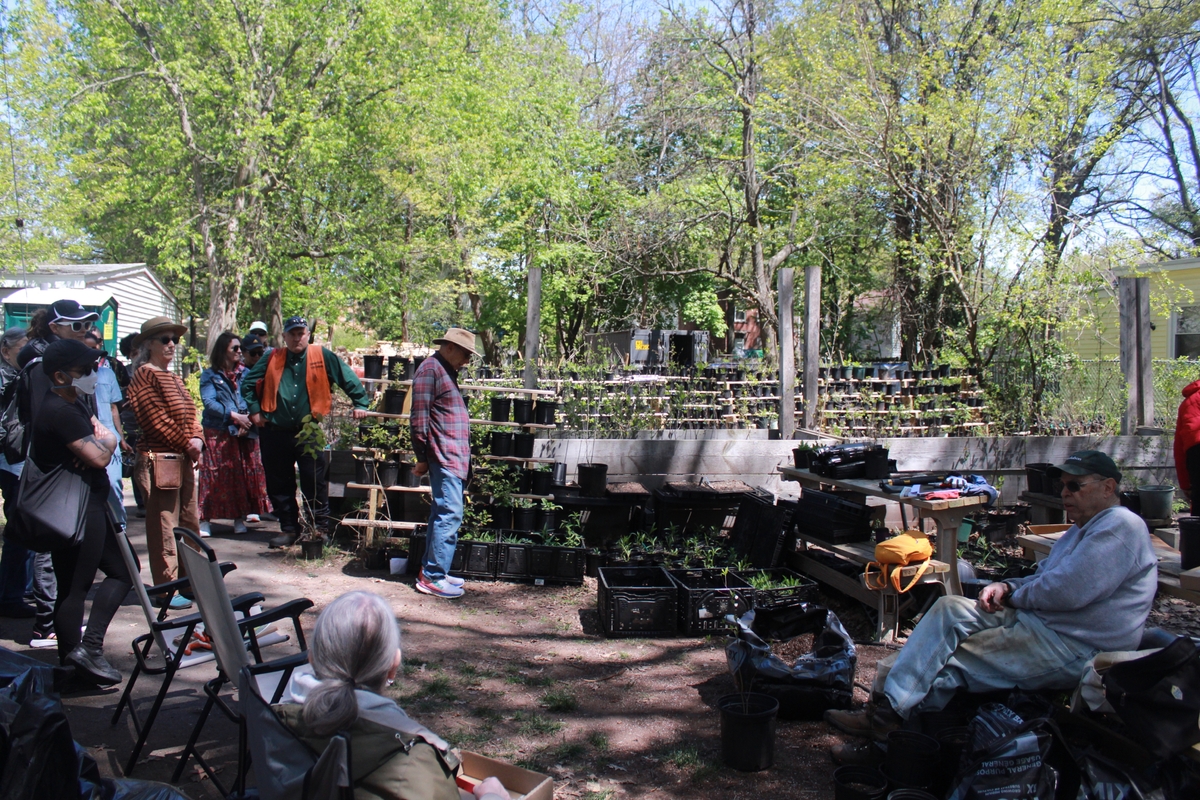
Abubakar led the tour across Shelton Avenue to Urbanscapes, a native plant nursery that she opened in 2021. The plans she laid out then, for space for plants, a woodworking station, a greenhouse, a pavilion, and an outdoor kitchen, were far along in their development, with an expanded plant area, beehives, the greenhouse, and the pavilion all completed. The pavilion and nearby raised beds came about through a partnership with UCONN. In 2022, Abubakar won a lifetime achievement award from the Audubon Society for her environmental work. Recently, she landed a $250,000 grant through the USDA to start a hydroponic growing program and educate people about how it works. All of Urbanscapes’ activities were focused on a broader question: “how do we connect to the nature here in the urban environment?” Abubakar said.
Urbanscapes employs Newhallville youth to work at the nursery, several of whom were there on sunny Saturday (it has another event this coming Saturday from 10 a.m. to 2 p.m.). A discussion began about the importance of planting native plants. “We want to invite the bees and birds and bugs to help the environment,” one employee said, and native plants did that most effectively. “It’s probably better than recycling.”
For Abubakar, the community work and the environmental work went hand in hand. “It’s all interrelated,” she said. “How do we make a positive change?”



There are so many opportunities for small business owners to take advantage of the proximity to the trail and its users. Places to eat and drink, places to repair your bike, or rent a bike, or buy a bike, or skateboard, or scooter, or buy crafts.
This Farmington Canal Trail project, connected to other trails for biking, hiking and walking around the state, are a really beautiful and positive improvement to the fabric of our lives and the enjoyment of our state. I can’t wait until this gets connected to the East Shore parks, Lighthouse Park, the Shoreline Greenway Trail, the West Haven boardwalk and beaches, the East Coast Greenway trails, and onwards to the rest of New England and the MidAtlantic and beyond.